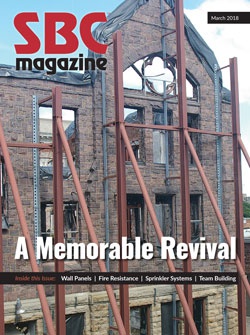Editor's Message: Building More with Less
Editor's Message: Building More with Less
I’ve attended the NAHB committee meetings held at the International Builder’s Show (IBS) the last three years, and during that time, the lack of skilled construction labor has consistently been a major challenge for builders, regardless of their size or where they build in the U.S. An NAHB study showed that in 2017, 82 percent of builders said field labor was their top issue. Even more builders expect that to be the case in 2018.
What is interesting is the change I heard this year in builders’ conversations. They’re still talking about the labor issue, but they have new ideas about how to tackle it.
In prior years, the focus was on bringing more people into the construction trades. Efforts and resources were aimed at lobbying lawmakers. Requests were made for more tax dollars for training grants. Builders developed more training programs to qualify for those grants. And everyone encouraged educational institutions to drive young people into existing trade programs.
After two years of very limited success on those fronts, and in addition to changes in immigration policy and enforcement that are having a very real impact on the availability of foreign-born construction workers, builders are coming to terms with the reality that what they really need is a way to construct more buildings with fewer people on the jobsite.
Coupled with the decline in labor conditions is an increase in building costs. Almost all building material costs have gone up over the past year, with softwood lumber, OSB and steel seeing increases. Most builders expect the cost of materials to be a significant challenge going forward; which means builders have an increasing incentive to construct buildings using less material.
The great news is: structural building components – roof trusses, wall panels or floor trusses – provide framing options that require minimal labor to install and that use raw materials with maximum efficiency. Components are the perfect solution to builders’ two most significant pain points. Now is the time to take advantage of homebuilders’ shift in focus and grow your market share.

